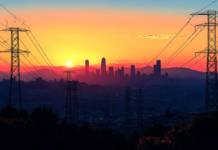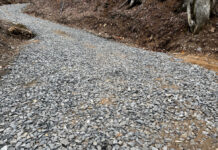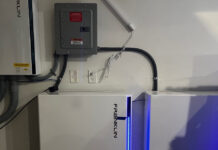We are on the fifth consecutive day of rain, fog and/or heavy cloud cover. Because of this unusually long lack of sunshine, this is one of those weeks when it would be tough to live off grid with solar power.
For example, by 11 a.m., we used 11.4 kilowatt hours (kWh) because the heat pump kicked on in the middle of the night. On a sunny day, that would be no problem, but in this case, we produced only 2.2 kWh. Those “missing” nine kilowatt hours of electricity would have to come from our batteries or the grid. Because this is the fourth day with little or no sunshine, the batteries have almost no power.
Because we’re connected to the grid, the system used grid power to run the heat pump, just like before we installed the solar power system. But if we were off grid, we would have two options: turn off the power to everything except the refrigerator and freezer, which consume 3 to 4 kWh per day, or turn on the generator and use it to charge the batteries.
Generator or No Generator
In a scenario like we experienced with Helene, when there is some opportunity for resupply, running the generator is a good choice. First, in this scenario, there is a good chance we can get more gasoline. Second, we don’t have to worry about noise discipline. In a peaceful, civilized grid-down event, it won’t be a problem if someone hears the generator.
In a more extensive SHTF scenario where there is no gasoline and we may be in a world without the rule of law, running the generator will have to be saved for emergencies. The noise, even echoing off the mountain walls to obscure its origin, might remind someone with ill intent we are up here and have resources worth plundering. Equally important, if I have a limited amount of gasoline, I’d prefer to use it in the chain saw, not the generator. We need heat from a wood fire more than we need light from a generator.
Cost versus Value
This time of year, we generate more power than we consume. So far in May, we produced 900 kWh and used 650, giving us a surplus of 250. But because our batteries only hold about 30 kWh, we can’t keep all those extra kilowatts to use on cloudy days. Our system automatically sends the excess power to the grid, generating a credit on our electric bill. If the grid was down, the panels would shut off and the excess power goes to waste. Of course, if we see this happening, we can run a load of laundry through the dryer or bake a loaf of bread in the oven to utilize the power.
Batteries large enough to store another 90 kWh would cost somewhere around $50,000, more than the original cost of our entire system. It’s just not worth spending that for the handful of times when we get three or more days of no sunshine. As long as it has power, we use the grid as our back up power. In weather like this, we are glad it is there. It is more cost effective to pay 17 cents per kWh than $50,000 for larger batteries.
In my experience, batteries are the most expensive component in a solar power system. It is much cheaper to buy extra panels and produce more power than it is to buy additional batteries to store more power. If you live in a sunny location in the Southwest, lots of panels may work fine because they can run your air conditioner, which is most important during the day. In a location further north with less sun, you may find more batteries are more important than more panels.
Renewable Power Problems
Carry our problem—days of no sunshine resulting in no power for our house—to a grid-wide scale and you can see what happens when stormy weather or a massive snowstorm covers a wide swath of the country. No solar power generation across five or six states can mean a deficit of electricity for the grid. This is why fossil fuel or nuclear plants are still needed. If batteries for a single house would cost $50,000, imagine the cost of a centralized battery to power 100,000 homes.
Solar power has come a long way in the past decade. Every year, new technology is announced. Larger batteries. Better, more reliable inverters. Smart switches that can control how your power is distributed based on your battery’s state of charge. Progress is being made, but there is further to go as solar power systems get smarter and more efficient.
Despite the lack of a perfect system, if you have considered a whole-house or even a smaller solar power system, this may be the best time to buy one. If the Biden solar incentives are eliminated by the so-called Big Beautiful Bill, the current 30 percent tax credit could end on Dec. 31. To qualify for the credit, your system will have to be installed and operational by yearend. These projects move slowly and getting utility approvals and building permits can take time, meaning there is not much time to get your system while you can save 30 percent. If you want a bite of the solar apple at a discount, don’t delay.







